Connel Ferry Bridge
Connel Ferry Bridge
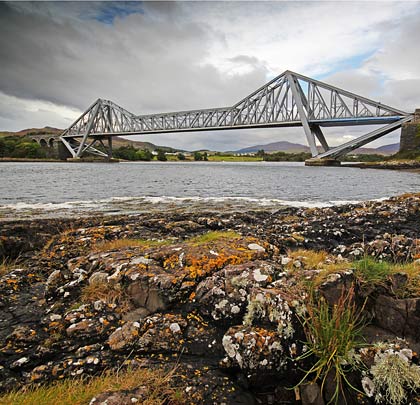
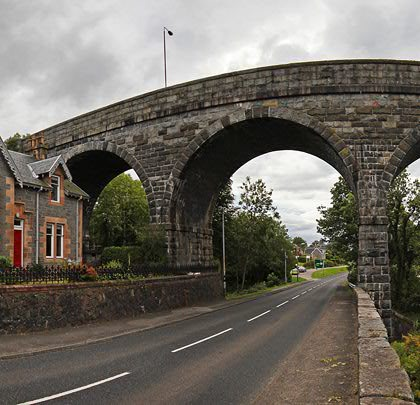
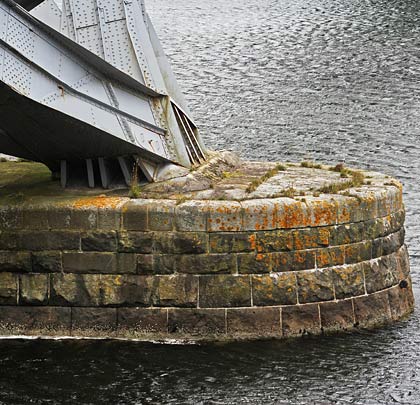
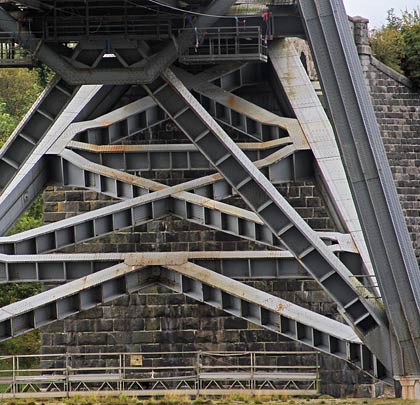
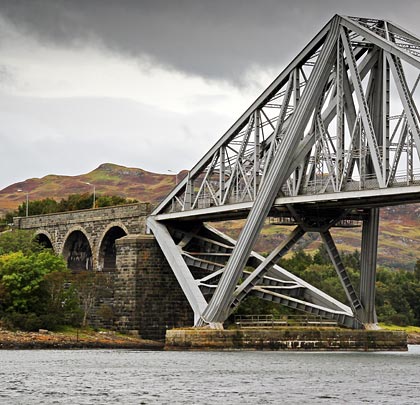
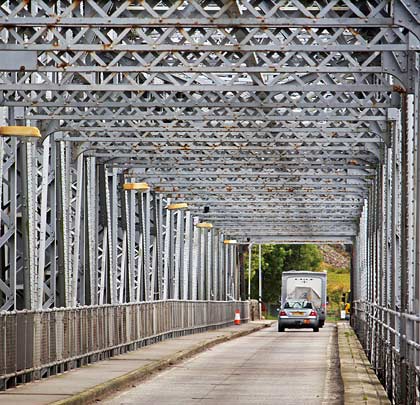
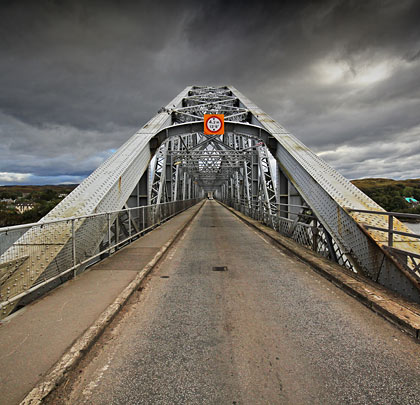
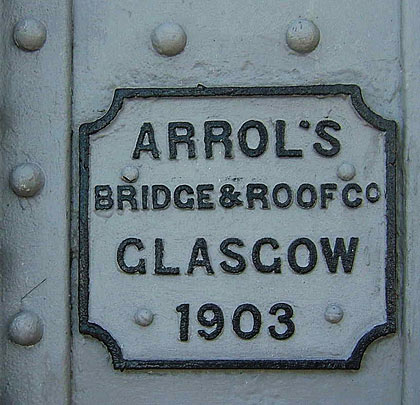
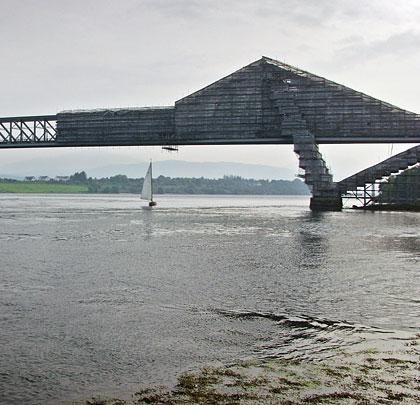
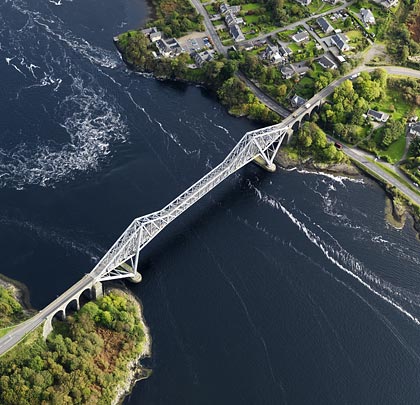
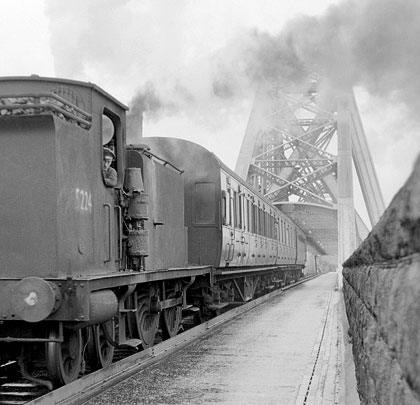
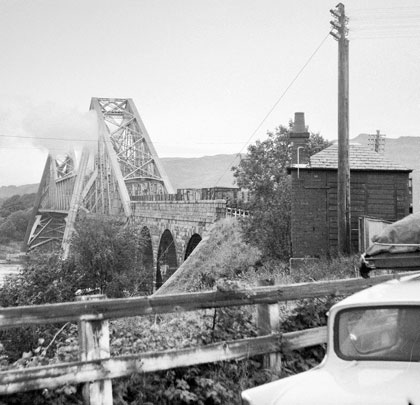












Built between 1898 and 1903 for the Callander & Oban Railway, Connel Ferry Bridge hoisted the Ballachulish branch across the narrows at the mouth of Loch Etive. In terms of British railway structures, its main cantilever span of 524 feet was second only in length to the Forth Bridge. Sir John Wolfe Barry was responsible for its engineering whilst Glasgow’s Arrol Bridge & Roof Company acted as contractor.
The unusual design was driven by the local tidal flows and the resulting impracticability of building piers. Steeply-graded embankments pushed the line upwards onto the approach viaducts which, at both sides, comprise three masonry spans. These elements were erected by John Best of Edinburgh. A deck clearance of 50 feet above high tide was necessitated by the movement of shipping beneath. The tops of the cantilevers are 120 feet above the water.
The elevation of each cantilever comprises three main members forming a large triangle, a horizontal rail-bearing member extending over the waterway and braced in connection with a fifth member from the apex of the triangle. Resting between the extremities of these two arms, which project towards one another from either side of the channel, is a girder span of 232 feet. The whole weight of the bridge and its load is carried at the lower points of the triangle, which rests on granite piers, and to arrest the tendency to tilt seawards about these points, the landward arms of the cantilevers are anchored to the masonry abutments of the approach viaducts.
Erection of the bridge did not pass without incident. On 19th September 1902, one of the workmen fell 20 feet into the sea, striking the rocks on which the north pier is founded. The man sustained breaks to several ribs and both legs, as well as serious head injuries.
The single line opened to traffic on 24th August 1903. Ten days earlier, Colonel Yorke had inspected the structure on behalf of the Board of Trade. Nine Caledonian locomotives and four 30-ton wagons were coupled together – having an aggregate of about 1,000 tons – and passed slowly over the bridge, stopping frequently. This operation was then repeated at increasing speeds.
Between 1909 and 1913, road vehicles were transported across the bridge on a rail-mounted charabanc; thereafter they could drive across on payment of a toll – the bridge effectively operating as a long level crossing. The branch closed on 28th March 1966, since which time the structure has been used solely by road vehicles on the A828.
The bridge was the focus of major renovation works in 2003.
Signal Head and Eglos’ photos are taken from Flickr and used under Creative Commons licence.







